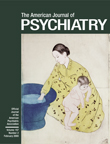Jordan Peterson has written a large book with even greater ambition. His stated goal is to “explain the meaning of history” (p. 459). His premise is that all cultures (except the West) construct history as myth rather than empirical fact, and the meaning of history (and meaning itself) cannot derive solely from fact. This work, representing a career-long quest, evolved from a crisis he experienced as a young man. Raised in a family “under the protective auspices…of the Christian Church,” he abandoned his spiritual roots and passionately sought a remedy for the “general social and political insanity and evil of the world” (p. xv). Specifically, he could not understand the nuclear arms race. “What could possibly justify the threat of total destruction?” As did his prototype Carl Jung, he dreamed in response to his crisis and from his dreams gradually came to believe that he discovered something unique (p. 459). From this discovery he drew his maps of meaning, ranging from neurobiology through Western philosophy and theology to Eastern religions.
Peterson’s maps are actually one map with variations. The gap between what is and what should be is bridged by the question, “How should we act?” Myth portrays what is known to be and what should be and how to transition one into the other by way of the grammatical structure of transformational mythology, a narrative of a journey through life. In other words, myth tells us how we should act. Herein lies the crux of Peterson’s theory. Belief, that which both explains (gives meaning to) history and provides direction for us, is at once determinant and conditional. It can be disrupted because it is finite. It survives because it is malleable. Anomalous information from the unknown (or chaos) challenges our existing beliefs and therefore cries for reinterpretation. Myth accommodates anomalous information of necessity, and therein lies its strength. Myth represents the eternal unknown (nature, creation, and destruction), the eternal known (culture, tyranny, and protection), and the eternal knower (the process that mediates between the known and the unknown). The knower is personified in the hero, the knight who slays the dragon of chaos (think St. George). From the struggle of the hero at the boundary of order and chaos comes maturity in the form of individuality, Peterson’s Holy Grail.
How does this “map” to the person in the street (for Peterson, the middle-class businessman)? He or she progresses from explicitness to implicitness, from father and husband, mother and wife, through capitalist personality/American personality, onward to the Judeo-Christian personality, and ultimately to the exploratory hero. Read Jung here, a progression from the personal to transpersonal, from individual to shared. Therefore, the Holy Grail of individuality must be tempered by the absolute “out there.” To achieve individuality, chaos must be progressively “mapped” into meaning through an ever-evolving spirituality grounded in mythic narrative.
Confused? Doing justice to this tome in a two-paragraph synopsis is impossible, so my summary must tantalize at best and probably will bewilder. This is not a book to be abstracted and summarized. Rather, it should be read at leisure (although it is anything but light reading) and employed as a stimulus and reference to expand one’s own maps of meaning. I plan to return to Peterson’s musings and mapping many times over the next few years.

